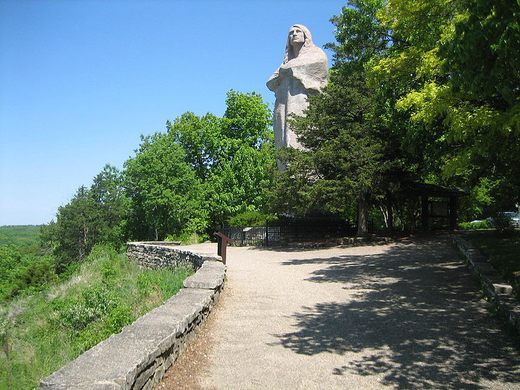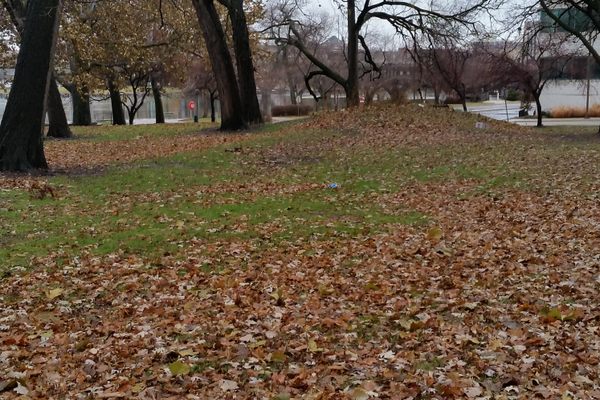AO Edited
Black Hawk Statue
This monolithic statue was erected in honor of Chief Black Hawk (even if it wasn't made to look like him).
The Black Hawk War of 1832 between United States forces and the Native Americans who called the land home, is considered the last so-called Indian War east of the Mississippi. The leader of this push against expansion, Chief Black Hawk from the Sauk Tribe, is honored by a monolithic statue known as The Eternal Indian—though it’s not actually modeled in his likeness.
Plans for the cement obelisk were began in 1908 by the sculptor Lorado Taft and the Eagle’s Nest Art Colony. As Taft and others stood on the bluff where the statue now stands, arms folded in contemplation they were said to have been reminded of the American Indians that once stood, looking out over the same bluff. To honor their legacy, they created The Eternal Indian, otherwise known as the Black Hawk Statue. First making smaller mock ups of the piece before building the tall concrete figure, the monolith was finally completed in 1911.
Standing around 50 feet tall from the base to the top of the figure’s head, the statue seems to be a featureless cement tower until the top portion when it transitions into a likeness of an American Indian wrapped in a blanket. While the tall spire is hollow, the concrete is as thick as three feet deep in some places. It can be entered via a door in the base, but the interior is off limits to visitors.
At the 1911 inauguration of the sculpture, Taft said that the piece had been inspired by Sauk leader Chief Black Hawk, namesake of the 1832 war of the same name, but the sculptors did not intentionally base the figures likeness on any one figure.
Today the tall spire still stands in Lowden State Park. Over time the statue’s cement chipped in a number of places, but after nearly a decade of repairs are nearing completion in 2021.
























Follow us on Twitter to get the latest on the world's hidden wonders.
Like us on Facebook to get the latest on the world's hidden wonders.
Follow us on Twitter Like us on Facebook